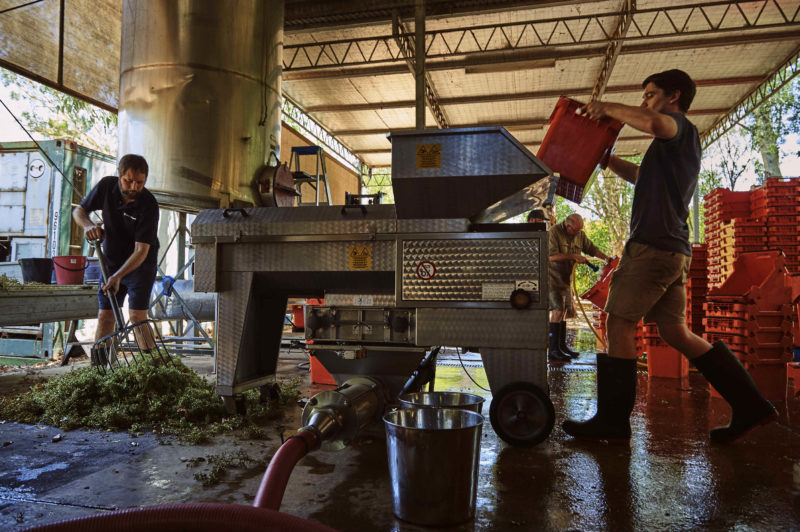Vintage / Harvest
Vintage is a marvellous time for winemakers – the opportunity to craft new wines from scratch. A winemaker is measured by their wines so vintage is critical to achieving their ambitions.
A lot of work occurs before vintage begins – growing and selecting fruit, planning the logistics, preparing the winery. Finishing off, bottling or packing away wines from previous vintages. And once vintage is over there is an incredible amount of work to complete the wines – which takes several years – even decades! But nothing compares to vintage.
Despite all the work pruning, training, weeding, spraying, irrigating, fertilising, measuring and observing, there are no guarantees of a successful season. Every farming enterprise has to manage agricultural risk – the risk of uncertain weather, pest and disease that are largely beyond the control of the farmer. All of this uncertainty culminates with the harvest.
And for grapes harvest time is critical. As grapes ripen in our warm Swan Valley even a few days make a dramatic difference to the ripeness of our grapes and ripeness is one of the key factors of not just quality but also style – and quantity too. So to make the styles of wine we plan, to make the best wine possible, and sometimes to even avoid losing our crop the timing of harvest is crucial.
Once wine grapes are picked they have a very short shelf life – they pretty much start to deteriorate straight away or stored at most in a cool room for a couple of days. They are much riper and more fragile than thick-skinned, loose bunches of table grapes. We need to crush them as soon as reasonably possible and start the fermentation. Grapes start to breakdown by themselves very quickly and what the winemaker is doing is essentially controlling and directing this process to create a “stable” product – the wine.
Picking crushing and pressing grapes is messy, sticky, and very physical. To manage quantities in the tonnes, not kilos, requires specialised machinery. At Faber’s scale, the lifting and carrying of the grapes and crushed grapes between each mechanised stage is hands-on. The cleaning and hygiene requirements after handling grapes are onerous. The need to harvest multiple batches of wine grapes at the ideal time and then avoid spoilage through a controlled fermentation – either before or after separating the juice from the skins and seeds – creates an enormous workload. Between the need to get this complex process right and having a heavy workload whilst managing that is why vintage is so difficult.
Our team works 12 hours a day six days a week (we rotate the day off as the winery is busy all 7 days) for 6 to 8 weeks. We work flat out all day and if we haven’t finished by 7 pm then we simply have to work longer until we’re done. The grapes, juice, and fermentations don’t wait because you’re tired or busy – all the winemaking processes are time-critical – and there’ll be just as much work to do the next day. On our busiest days, we will handle up 750 20 kilo crates of grapes and shovel another 5 tonnes of skins! Between us, we lose a lot of weight each vintage!
Vintage is quite uncertain and risky, physically very demanding, there is a requirement for great detail and finesse and flexibility, and it all happens simultaneously.
A winemaker needs to get the harvest right, plan a huge array of tasks with limited people and machinery, manage those people and machines and individually tailor how each wine is crafted.
Cosider visiting your favourite winery during Vintage, it truly is a magical time. If you’re lucky you will get to try grape juice post crush, or a bubbling ferment sample, or at the very least we can bore you with the tribulations of the current weather patterns!

